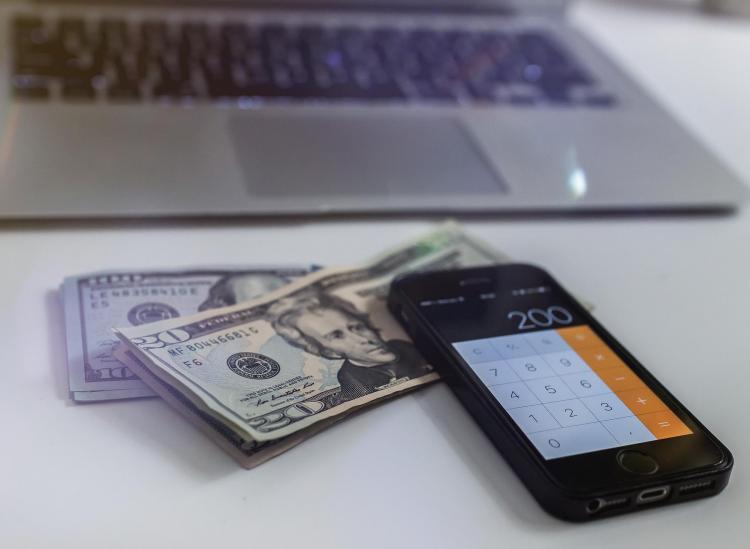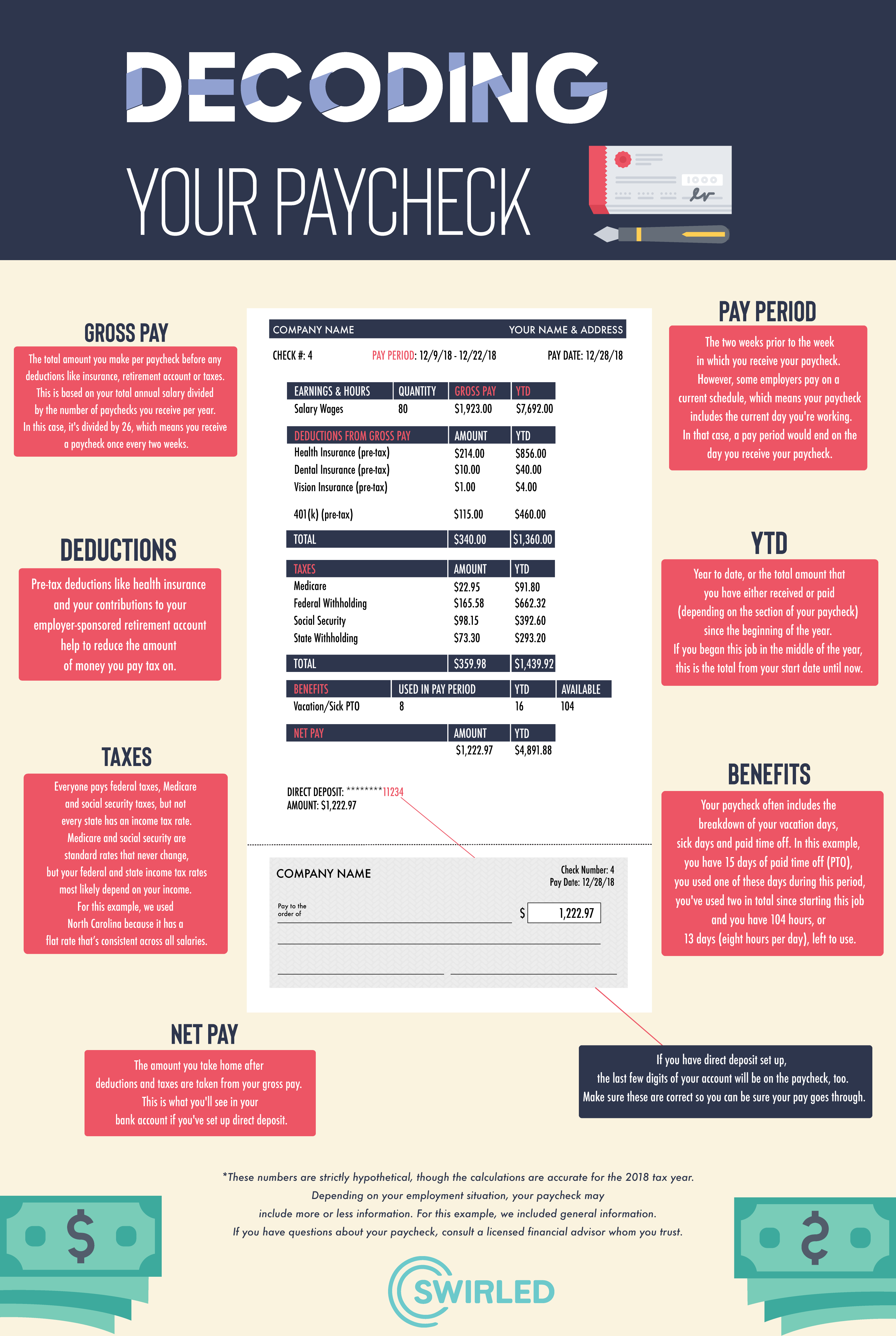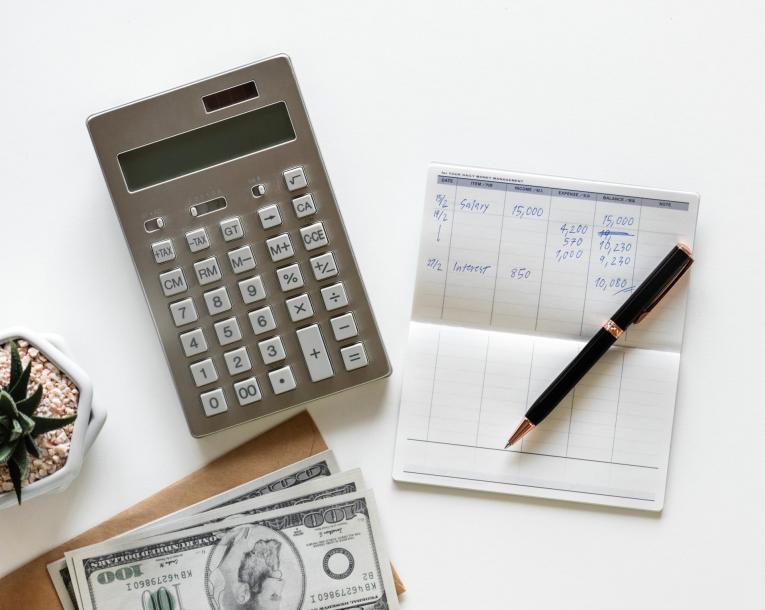How To Decode Your Paycheck And Manage Your Money Like A Boss

Pixabay
One of the best perks of working a full-time job after you graduate from college is receiving a consistent paycheck. Regardless of whether you’re paid every other Friday or just twice a month, that income is your ticket to financial freedom — if you manage it correctly. Before you go spending all that dough, take a few minutes to understand what’s printed on your paycheck and pay stub. Then learn what it takes to manage that money so you stay on track for all of your financial goals.
Understanding Your Paycheck
Your paycheck has a lot of valuable information in it. Learning what it all means can help you stay on top of your finances and manage your money like a boss. Here’s a breakdown of what could be in your paycheck, as well as what it all means.
In this example below, let’s say you’re making an annual salary of $50,000 at an awesome job in North Carolina. This is your fourth paycheck since you started working and you have health, dental and vision insurance, plus an employer-sponsored 401(k) retirement account that you signed up for and are contributing 6 percent to from every paycheck.

Swirled/Jen Sachs
Setting Up Direct Deposit
Now that you’re getting a paycheck every two weeks or so, make sure you get that money in your hands ASAP. If you don’t have a checking account yet, now’s the time to sign up for one. There are a ton of banks to choose from, so shop around for one that works best for you. We recommend one with no fees, no minimum balance requirements, easy access to ATMs and a good interest rate.
Once you have your checking account in place, sign up for direct deposit at work. You’ll most likely receive a form for it on your first day, but if not, ask your HR or payroll department about it. Also, you’ll need to fill in some information on this form, including your name, bank’s name, checking account number and bank routing number. Lastly, you’ll need to include a voided check with the form (literally a blank check that has the word “VOID” written on it in big letters). Once you’ve completed these steps, you won’t have to worry about receiving a paper check anymore. Your money will arrive in your account ASAP on payday.
Pro Tip: Always have at least one and a half months’ worth of take-home pay in your checking account at all times so that you can cover all of your expenses and whatever else life throws your way.
Scheduling Automatic Bill Pay
Now that your paycheck is being directly deposited into your checking account, schedule automatic bill payments so you never miss a deadline. Lots of companies allow this option for customers, so check in with your credit card, electric, phone and any other company that you pay a bill to every month.
You’ll also want to sign up for automatic transfers so you can save money every month without even thinking about it. You can do this by opening a savings account — preferably a high-interest savings account — and then scheduling the transfer of funds for every payday. If you’re not sure how much to save, try the 60-20-20 budget, where you save 20 percent of your income, spend 20 percent of your income and pay off your bills and necessities with the other 60 percent of your income.
Pro Tip: Maximize your money by connecting your bills to a rewards credit card that offers cash back, points or miles. Then, schedule automatic bill payments for that credit card so you never miss that payment. Credit cards are a great way to build credit and achieve an excellent credit score. If you don’t have one, we suggest you find one that’s right for your everyday expenses.
Managing Your Money

Unsplash/Rawpixel
The money’s flowing in and you’re feeling good about your finances, but are you doing everything you can to make it count? Here’s a quick checklist to consider when it comes to managing your new income like a boss.
- Budgeting: Take inventory of your finances and then create a budget around the 60-20-20 method. You can start with a simple Google Sheet. Just type in all of your expenses, compare that with your income and make sure you have enough to cover it all.
- Paying down debt: Your debt, whether it’s student loans or credit cards, is part of your monthly bills. Make paying it off a priority. Once you’ve paid the minimum, consider paying a little more toward the principal if you can. It’ll help you save money by not paying as much interest in the long run.
- Building an emergency fund: Saving any amount of money is great, but you should really aim to build up an emergency fund. Once you have six to nine months’ worth of expenses saved, plus a little more, you can start putting more money toward other things, like the principal on your debt or an investment account.
- Investing: Once you’re in a good place with paying your bills and saving money, consider investing some cash. You can start with as little as $5 through companies like Acorns. Other great beginner investment accounts include Robinhood, Fundrise and Ellevest.
With these tips, you’ll be well on your way to serving as your own financial advisor by the time you’re 30 years old. Just stay on top of your finances now and in the future, and you’ll be leading the life you’ve always wanted in no time.
Sign up for Savvy Saver by Swirled, our newsletter featuring budget hacks and important (yet fun) financial info. Saving money just makes cents!
RELATED
6 Steps To Saving Money And Paying Down Debt At The Same Time
You’re Losing Out On A Lot Of Money By Not Doing These 11 Things
Here’s How Much Money You’re Leaving On The Table By Not Negotiating Your Salary











